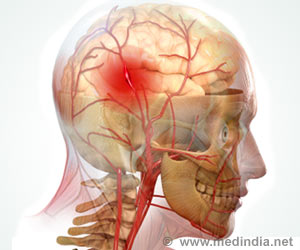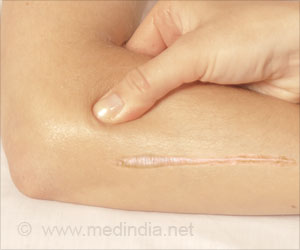Neck manipulation treatments may be associated with strokes, reveal American Heart Association Scientific Statement written by lead author Dr. Jose Biller and other stroke experts.

But a small tear in a neck artery, called a cervical dissection, is among the most common causes of strokes in young and middle-aged adults. A dissection can lead to a blood clot that travels to the brain and triggers a stroke.
"Most dissections involve some trauma, stretch or mechanical stress," Biller said. "Sudden movements that can hyperextend or rotate the neck -- such as whiplash, certain sports movements, or even violent coughing or vomiting -- can result in a cervical dissection, even if they are deemed inconsequential by the patient." Although techniques for cervical manipulative therapy vary, some maneuvers used by health practitioners also extend and rotate the neck, and sometimes involve a forceful thrust. "Although a cause-and-effect relationship between these therapies and cervical dissection has not been established and the risk is probably low, a dissection can result in serious neurological injury," Biller said. "Patients should be informed of this association before undergoing neck manipulation." Biller is chair of the Department of Neurology of Loyola University Chicago Stritch School of Medicine. He is an internationally known expert on strokes, especially strokes in children and young adults.
The association between cervical artery dissection and cervical manipulative therapies was identified in case control studies, which aren't designed to prove cause and effect. Thus, it's not clear whether other factors could account for the apparent association between manipulative therapy of the neck and a greater incidence of cervical dissection/stroke. The relationship is difficult to evaluate because patients who are beginning to have a cervical artery dissection may seek treatment to relieve neck pain. You should seek emergency medical evaluation if you develop neurological symptoms after neck manipulation or trauma, such as:
- Pain in the back of your neck or in your head
- Dizziness/vertigo
- Double vision
- Unsteadiness when walking
- Slurred speech
- Nausea and vomiting
- Jerky eye movements or other eye movement disorders
- Limb weakness on one or both sides
- Disorientation, memory loss or altered level of consciousness
Neck manipulation is widely used to treat a variety of musculoskeletal complaints, with nearly 85 percent involving adjustment or manipulation of the spine. With cervical manipulative therapy, a force is applied to the spine.
Typical movements for cervical manipulation can be rotation, lateral flexion, flexion, extension or a combination of these movements. Cervical dissection is most prevalent in the upper cervical spine and can involve the internal carotid artery or the vertebral artery. Cervical dissections associated with cervical manipulative therapy most often involve the vertebral arteries. Vertebral artery dissection is a major cause of posterior circulation ischemic stroke in young adults, and diagnosis can be challenging.
Advertisement
Advertisement









